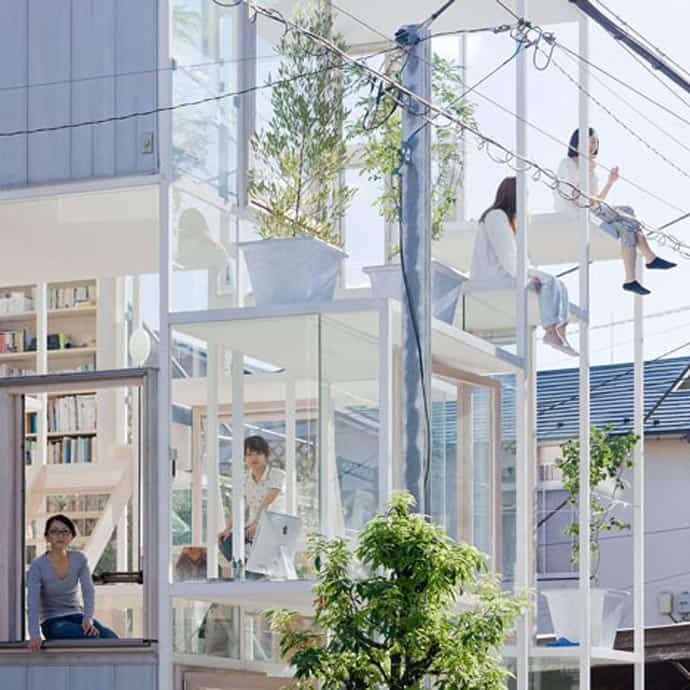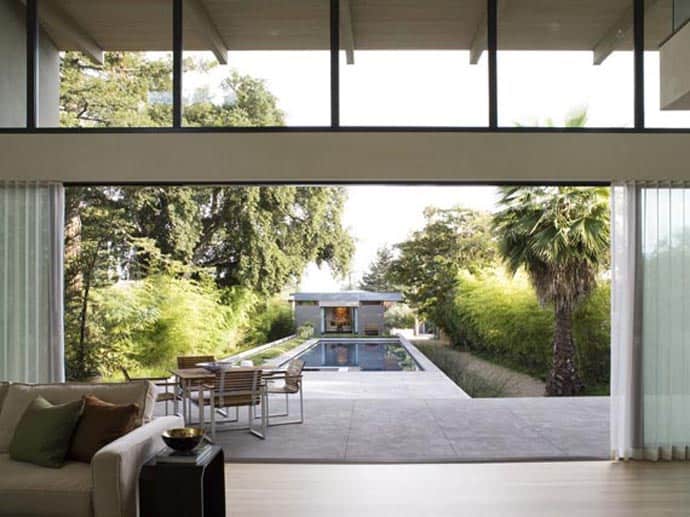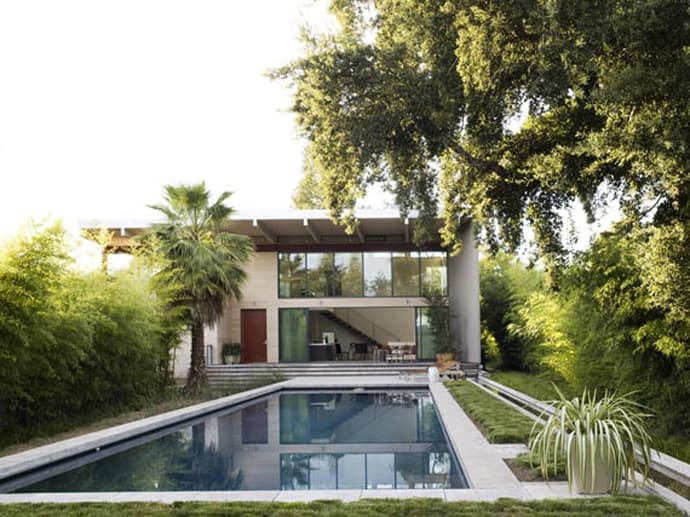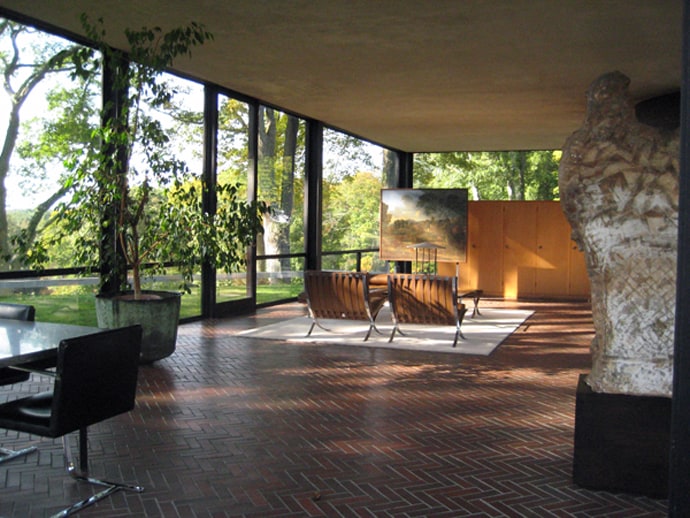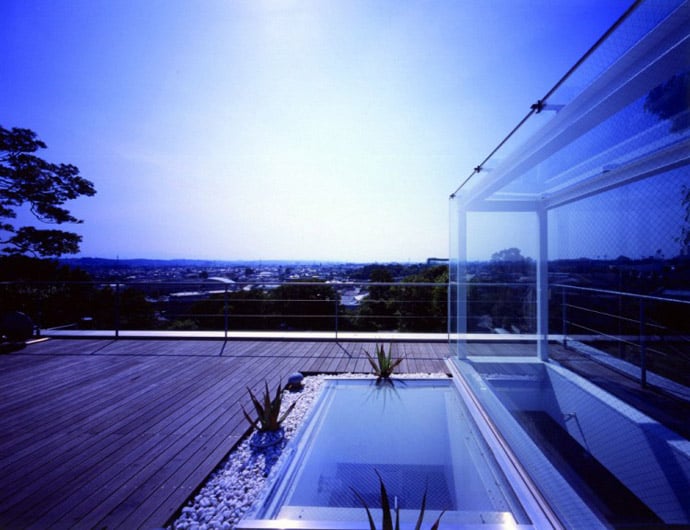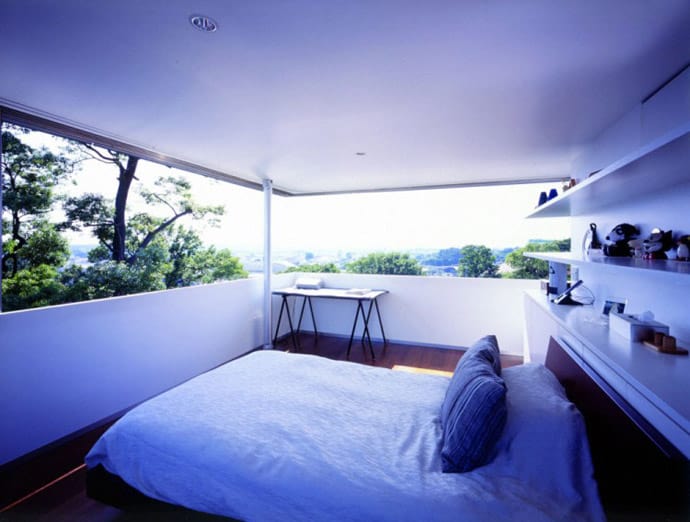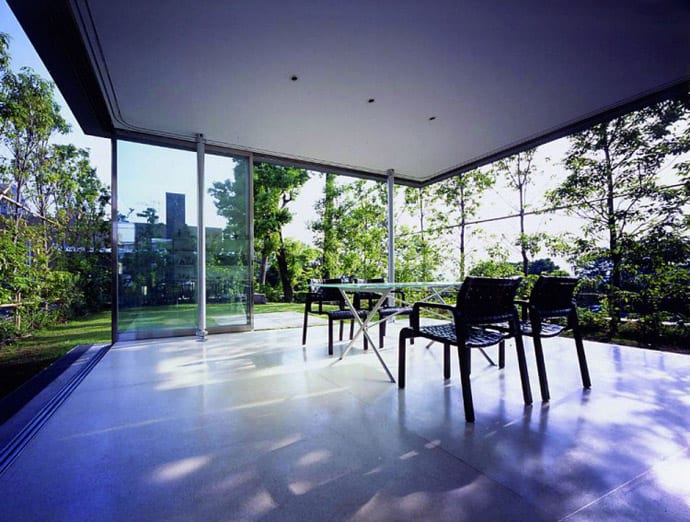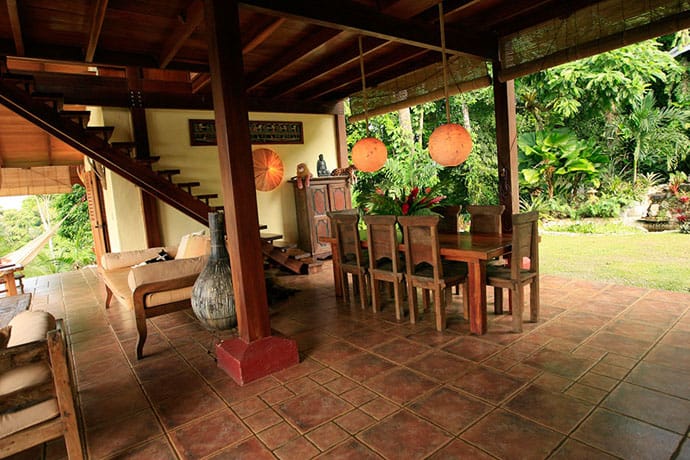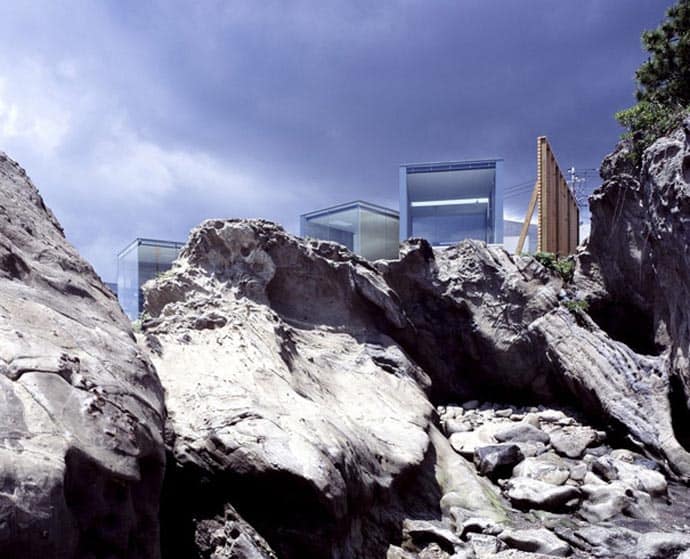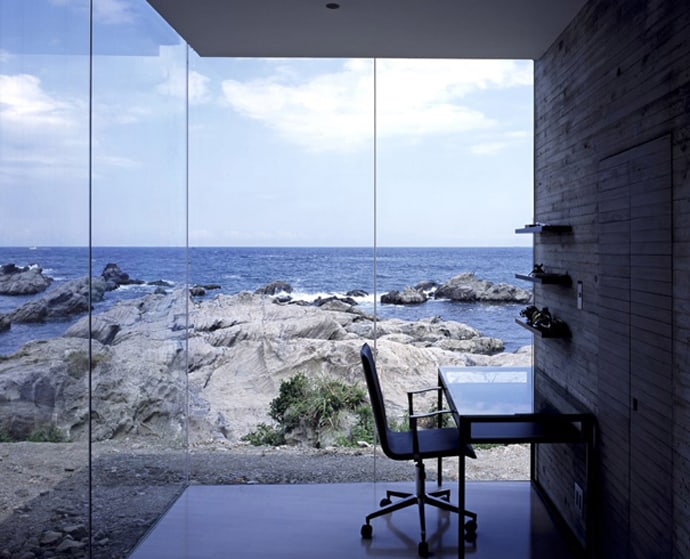We are not living on the edge, we are living within a tree … by stratifying floor plates almost furniture-like in scale, throughout the space, this house proposes living quarters orchestrated by its spatio-temporal relativity with one another, akin to a tree. It looks like a scaffolding and it was realized by Japanese architect Sou Fujimoto. The few walls that do exist are mostly glass, making certain spaces secure without adding privacy.
The house can be considered a large single-room, and, if each floor is understood as rooms, it can equally be said that the house is a mansion of multifarious rooms. A unity of separation and coherence.
For when accommodating a group of guests, the distribution of people across the entire house will form a platform for a network type communication in space.
San Francisco-based studio Butler Armsden Architects has designed the St Helena Retreat, a contemporary two-story home located in in St. Helena, in the Napa Valley of California. The main house is set back from the street, and is separated from the garage and studio by a lap pool that doubles as a reflecting pool for the facade. The main room of the house is two stories tall, and opens through triple sliding doors to similarly tall exterior space that is protected by a large roof overhang.
The glass facade lets you admire the pool and the garden.
Next on list, Philip Johnson’s amazing Glass House, in New Canaan. Standing in that transparent box, immersed in the fantasy of a home without walls — it was an exultant feeling. Glass becomes wondrous in this context, creating a connection between home and environment that is profoundly emotional.
Have you ever seen a house more connected to nature than this? I haven’t. The wide glass areas provide natural light and offer access to the garden all day long. You can admire it even if you don’t want to go outside.
Minimalist interiors that look like an art gallery.
Simply surprising … a house without walls made by a Japanese architect who was born in 1964, Takaharu Tezuka. The house is supported only with a central core and a pair of extremely thin columns. There is no wall on the ground floor level and the internal space is extending 360 degree out to the garden. The Japanese have the conviction that the amount of floor space is directly linked to better quality of living. but we think it is a combination of many more things: a lot of freedom of movement, fresh air circulation, natural lighting…which is not to say that this building is ordinary, although he uses more or less conventional construction methods, in each project some aspect is always pushed to its limits.
Enjoy the skylight while relaxing in your bed…
Costa Rica with no artificial ingredients! It is interesting to live in this house without walls … in the middle of a tropical forest (Costa Rica has 35 national parks), where wildlife can be experienced easily in every room, lounge, kitchen or bathrooms. : ) Costa Rica is one of the countries of the world that has a higher natural variety, with a very different climate in the Pacific coast and the Caribbean, which favors the existence of a huge diversity of fauna and flora .
Welcome to the house without walls designed by the young architect Sou Fujimoto. Forget walls as barriers to divide spaces, see them rather as places for interaction and sharing. House O is a holiday home built on a rocky outcrop overlooking the Pacific just two hours from Tokyo. Built on commission for a couple, it is a tree-shaped space that branches out into the various rooms, offering a host of different ocean views.



